Today we will be taking a look at the Xigmatek Nebula computer case. The Nebula is a mini-ITX chassis with a sleek and compact cube design, making it an interesting choice for home entertainment systems and offices alike.
Even gamers could use it, as there are already a number of powerful yet compact graphics cards and mini-ITX motherboards. The chassis can accommodate 175mm dual slot cards out of the box. It can take 230mm cards after you remove a single plastic component, which we plan to demonstrate later on.
With a volume of 22 litres, the chassis is big enough to cope with relatively powerful hardware, including proper ATX power supply units and big coolers.
|
Product Name |
Nebula |
|
Dimension |
(L) 260x (H) 330x (W) 260mm |
|
Drive Bay |
3.5" Internal x 2 (tool-free retainers) or 2.5” Internal x 3 |
|
Expansion Slot |
2 slots |
|
Motherboard Support |
Mini-ITX |
|
Power Supply |
Standard P/S2(ATX) or EPS |
|
Cooling System |
Rear fan: Preinstalled one 1200 RPM 120mm silent Xigmatek XOF black bladed fan |
|
I/O Panel |
USB 3.0 x 2 and HD Audio in/out jacks |
|
Max Graphic card Length |
230mm (after small adjustment) |
|
Max CPU Cooler Hight |
80mm |

In the box you get a very short manual, a USB 3.0 to 2.0 adapter, a bag with all-black screws, and some zip ties.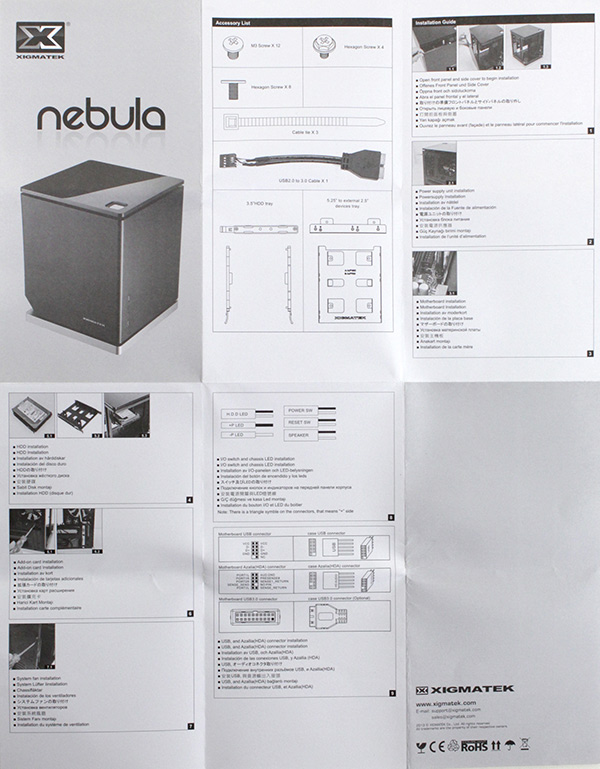
From the silver base to the piano black top, the Xigmatek Nebula looks sharp from every angle. You'll either love it or hate it after a single glance, but there is no question that it will turn heads.
Each side panel, crafted from thick aluminum with a matte finish, looks a bit different than the other. The front proudly displays the Xigmatek logo. The orange triangle at bottom breaks up any notion of monotony and so does the base, which is separated from the actual chassis by an 8mm gap.
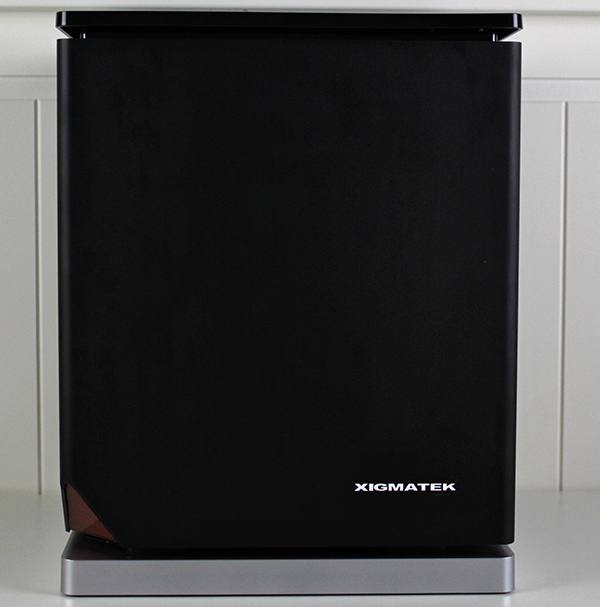
The gap isn't just an aesthetic feature, it allows the Nebula to scoop up fresh air while keeping the grille far from prying eyes. Therefore only the cooling vents at the back are visible. The front is as clean as it gets.
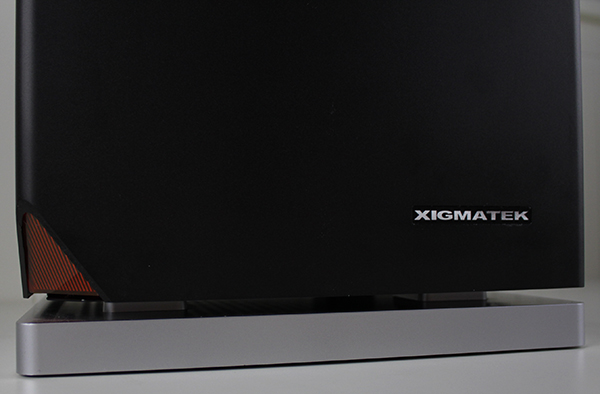
The aluminum side panels feature a 'jet black' finish and Xigmatek says it is scratch proof, although we tried not to test this particular claim. The panels are about 3mm thick, making them some of the thickest side panels were ever encountered on a PC chassis.
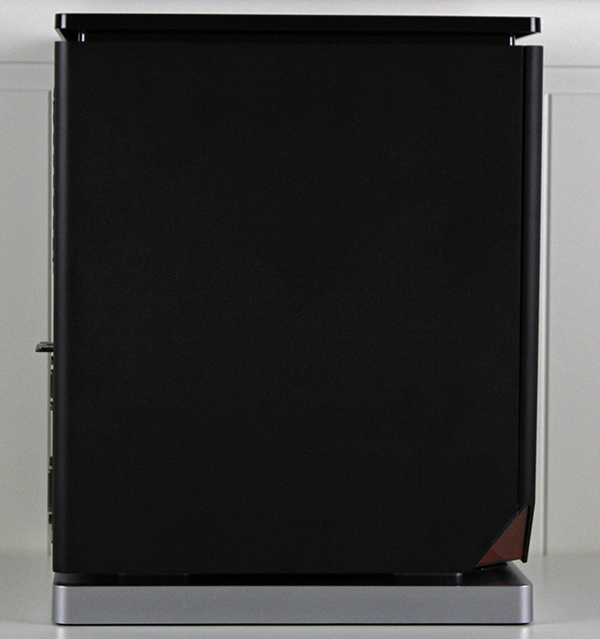
The orange triangle is visible from the front and left. It is an aesthetic feature with a down to earth purpose - it houses the power and activity LEDs.
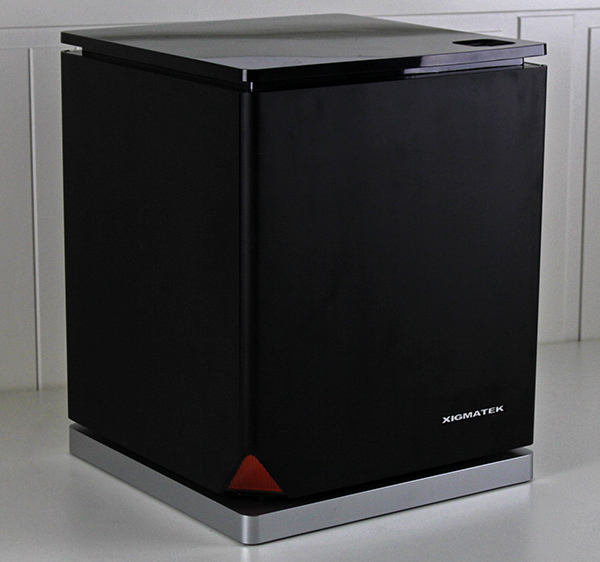
The right side of the panel features two USB 3.0 ports along with two 3.5-mm audio connectors.
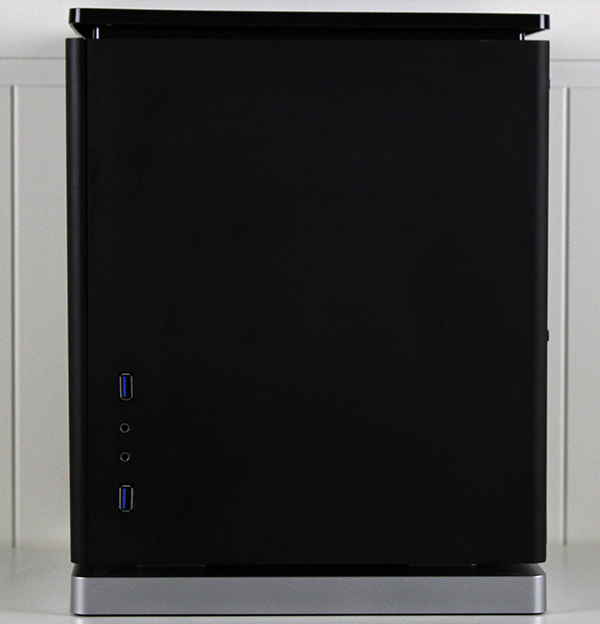
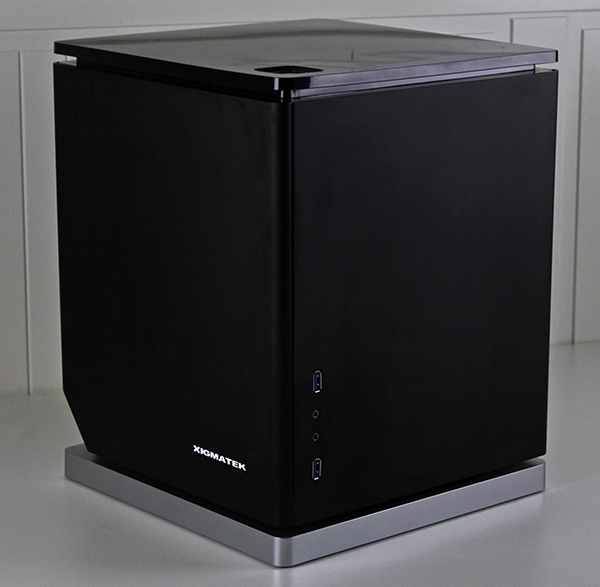
There is no reset button and the power button is located in the front right corner of the top panel. The panel itself features a black piano finish which looks great, but like all glossy surfaces it attracts a fair bit of fingerprints and scratches. Luckily the power button is relatively big so you won't get too many smudges on the panel unless you are really careless.
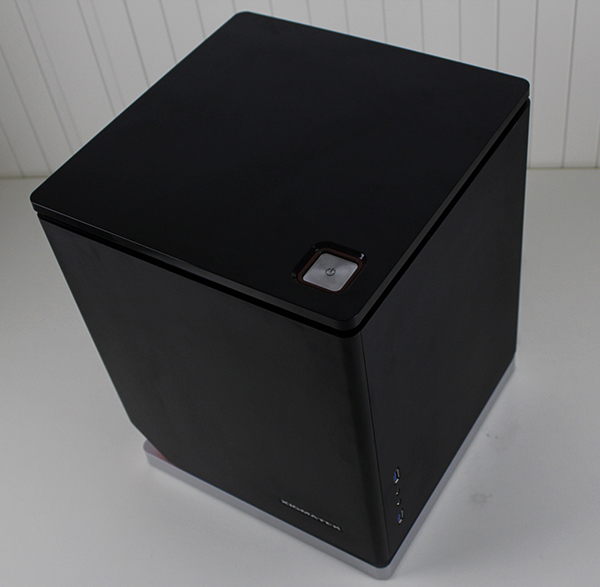
The power button is surrounded by an orange plastic inlay, but it does not glow - it is just decorative. Since the power button is big and since it is the only button on the chassis, users won't need "directions" and we don't see this as a shortcoming. Besides, the Nebula is not a gaming chassis and it does not need to look like the Las Vegas strip.
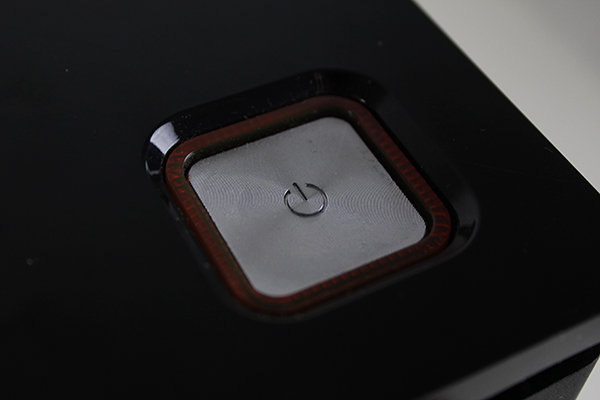
The frame is metal and the rear features a black finish, too. The I/O panel is at the bottom of the chassis, while the PSU slides into the top right hand corner. The chassis can accommodate two-slot graphics cards. As far as cooling credentials go, the design also features a couple of standard, rubberized openings for liquid cooling setups.
All exhausts are at the back. The chassis ships with a single exhaust fan located near the centre of the back panel. It is a 120mm Xigmatek HOF fan with fluid circulating bearings. It spins at 1200rpm and it is very quiet indeed.
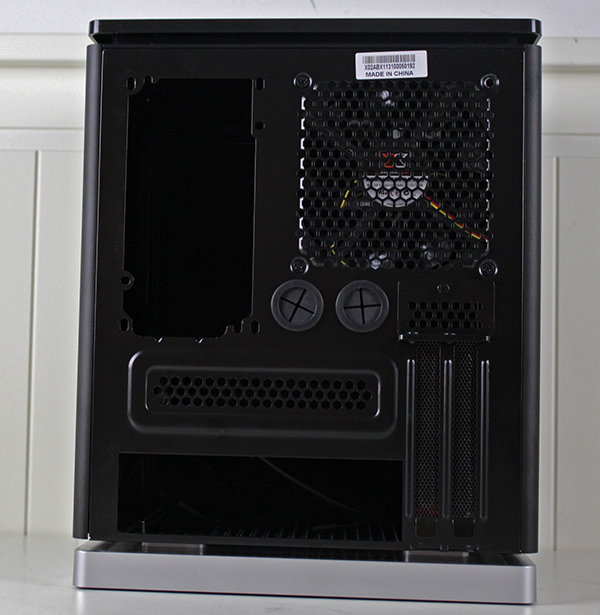
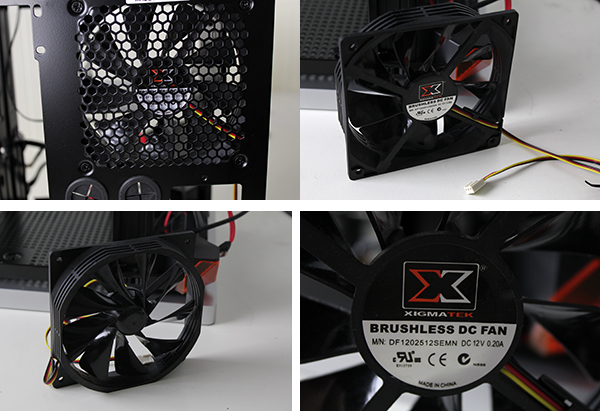
The silver base is about 2cm tall. It is plastic, but it feels sturdy and the silver finish is a nice touch. The metal chassis is connected to the base on all four corners and the 8mm gap allows the chassis to get a fair bit of air. 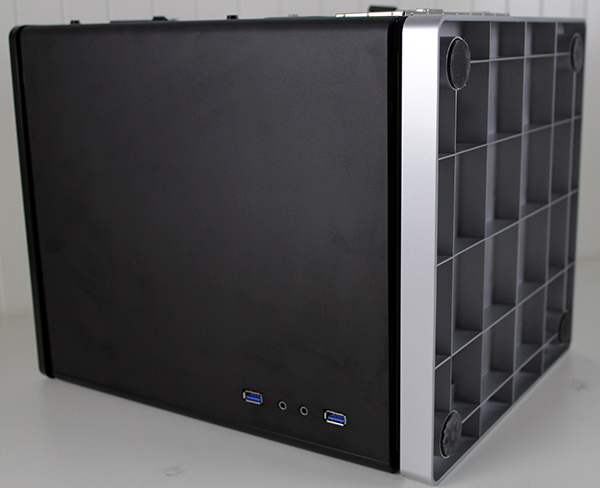
The base features four soft rubber feet. Unfortunately, they can leave black marks on bright surfaces, but this is not a big shortcoming as few people move their chassis around all the time.
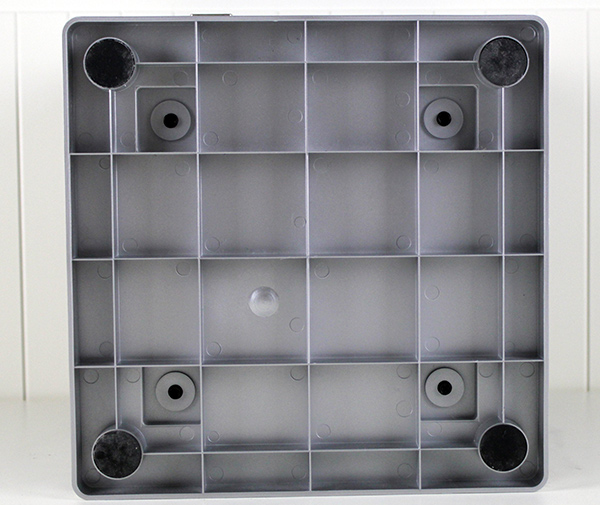
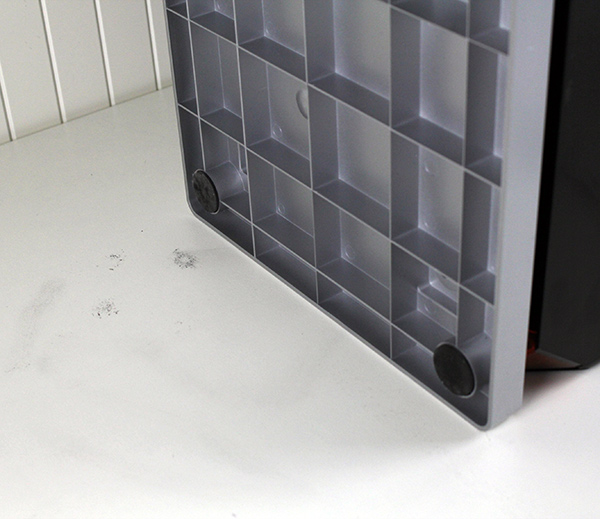
The plastic base can be removed by undoing four screws located at the bottom.
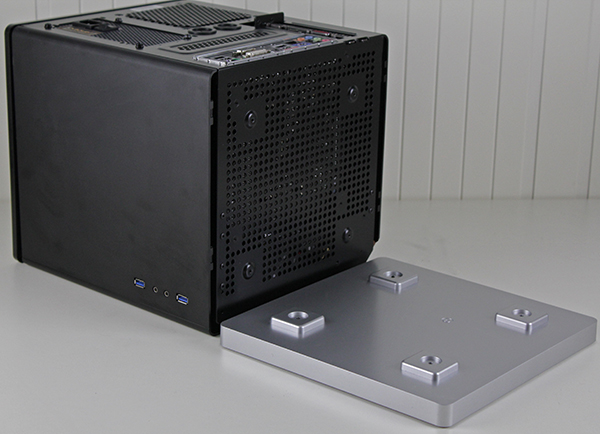
Maintenance should not be an issue. The thick side panels are tool-less and they have a quick-release mechanism. They can be removed in a matter of seconds simply by pulling them at one side.
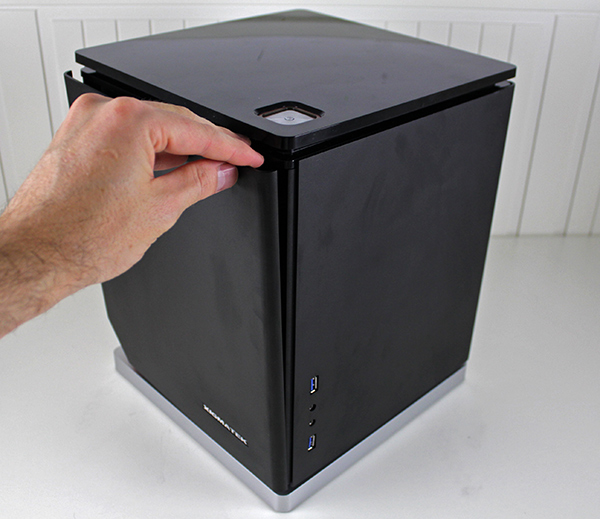
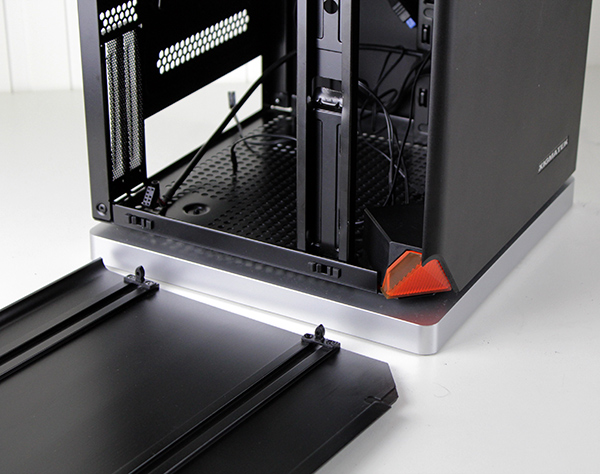
The locking mechanism feels good and at no point did we get the feeling that something could go wrong, or break. The thickness of the panels also helps, as they are practically impossible to flex unless you are really out to wreck them. Bear in mind that the panels aren't light, so they should be handled carefully. If you happen to drop one on your desk, expect some scratches - on the desk, not the hefty panel.
With all that in mind, we must admit that the panel design is clever and the panels themselves feel impressive, practically bulletproof.
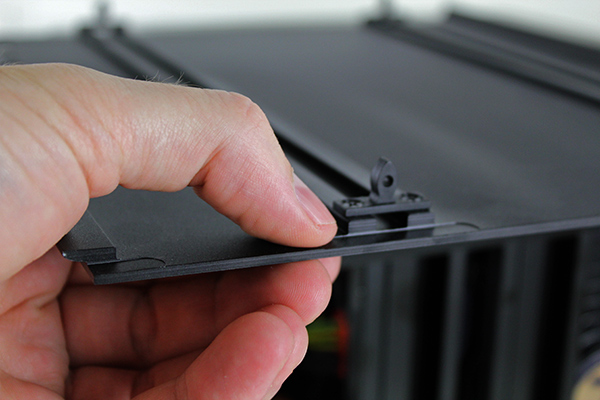
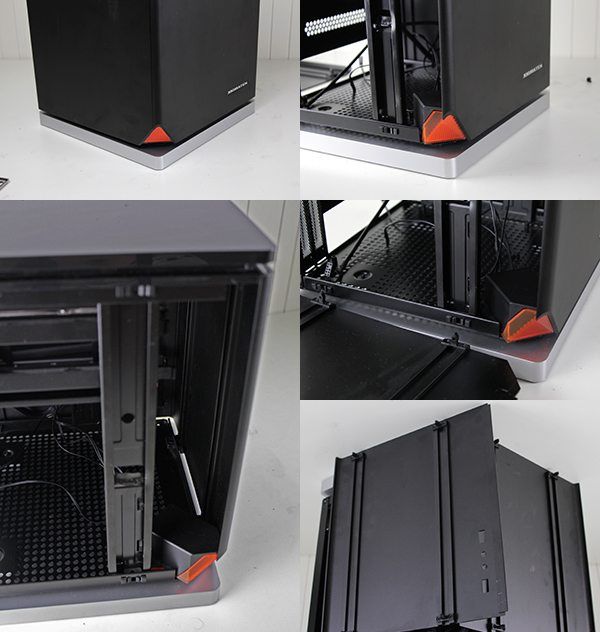
Once the panels are removed, every corner of the chassis becomes easily accessible. The motherboard is mounted horizontally. The PSU slides into the top, vertically.
The interior design is quite good considering the compact dimensions of the Nebula case. However, it is not perfect. Our biggest issue is the location of the PSU. Had it been mounted horizontally, the chassis could accommodate even bigger CPU coolers. Xigmatek say the Nebula can cope with 80mm CPU coolers.
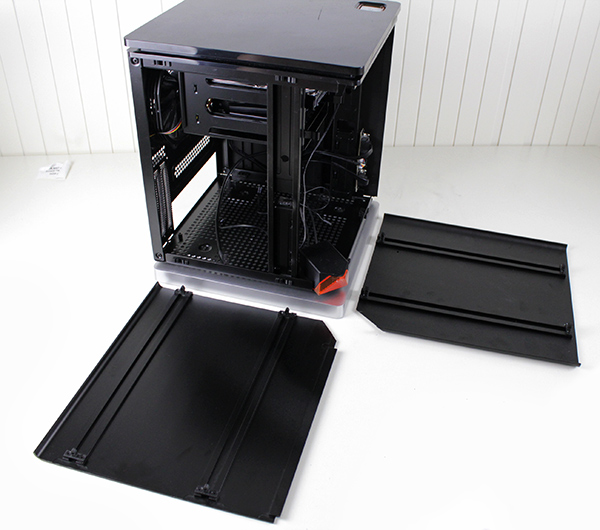
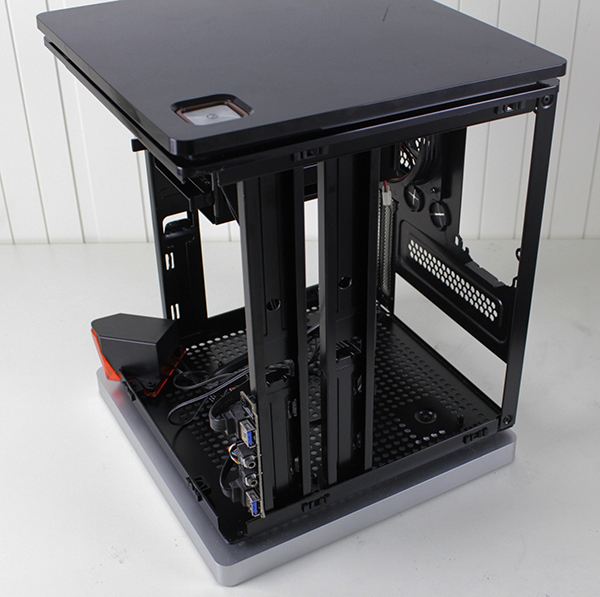
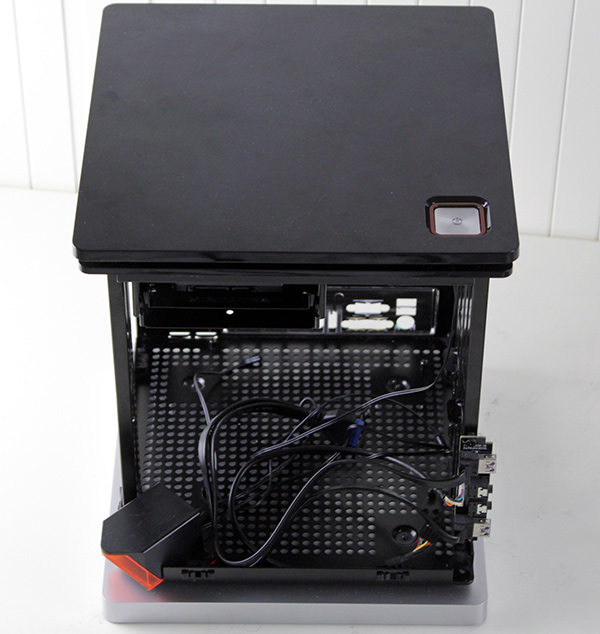
Since there are zero air vents on the panels, the panels themselves play no role in the cooling process. However, the bottom of the chassis does, as you can see. The gap is wide enough to fit a screwdriver in between the base and the chassis. Even when the motherboard is mounted, the chassis still gets enough air from the bottom.
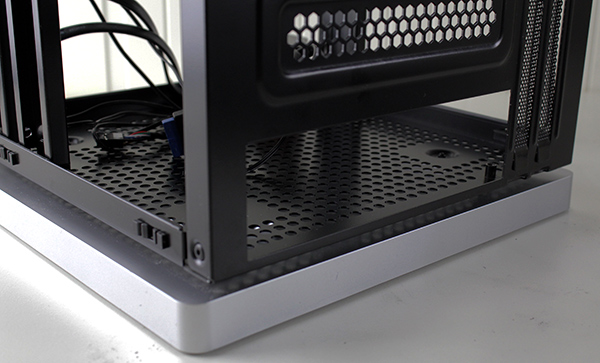
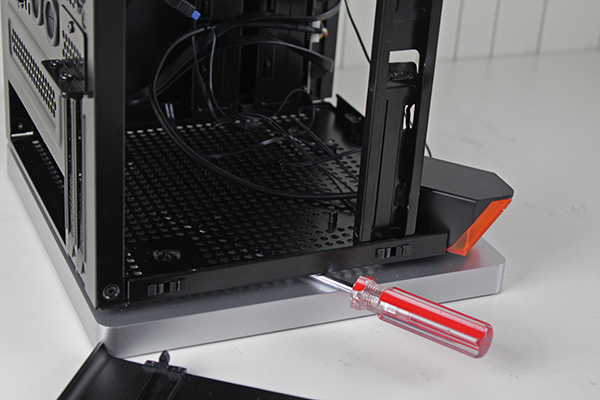
The left side panel leaves about 1cm of room for the GPU cooler when a dual-slot card is installed. We suggest blower-type cards, as they will funnel hot air out of the chassis.
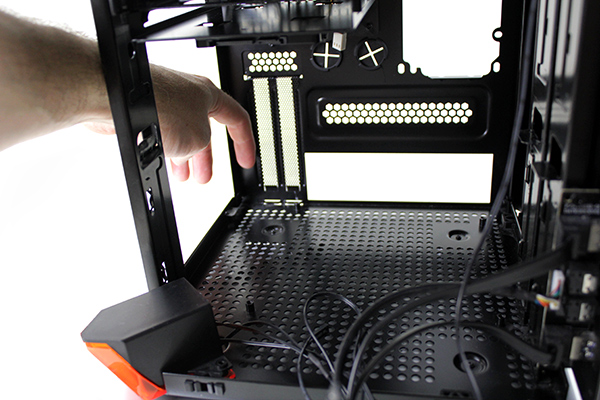
The plastic box with the orange triangle houses the HDD and power LEDs.
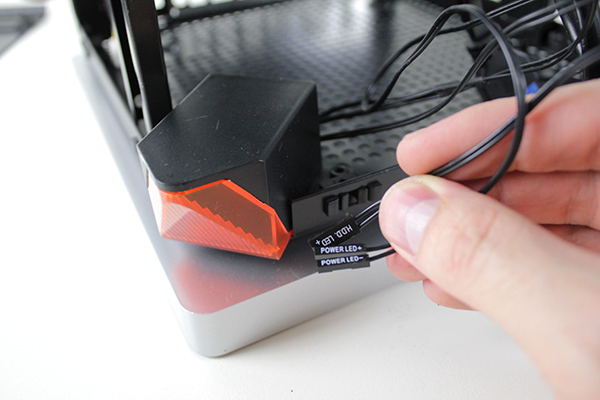
For some reason this component is oversized and since it sits opposite of the PCIe expansion slots, it prevents the installation of big graphics cards. On its website Xigmatek says the Nebula can accommodate 200mm long cards, but what the spec does not say is that this length is only possible when using single slot cards. Based on our experience, dual-slot cards are limited to about 175mm. Luckily a big chunk of the LED housing can be removed, leaving a room for 230mm cards, which we plan to demonstrate later on.
The I/O panel is mounted on a small PCB mounted to the right front pillar of the frame.
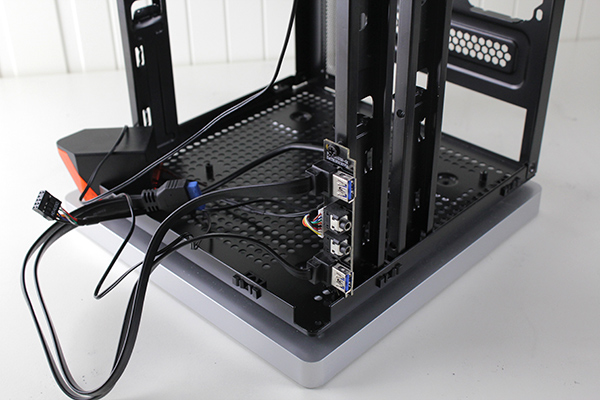
The right panel features openings for the pair of USB 3.0 connectors as well as audio connectors.
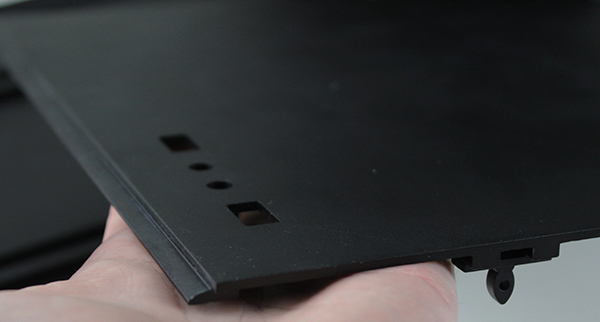
The drive bays are located at the top. They sit next to the PSU and the rear exhaust fan, which means airflow is not a problem.
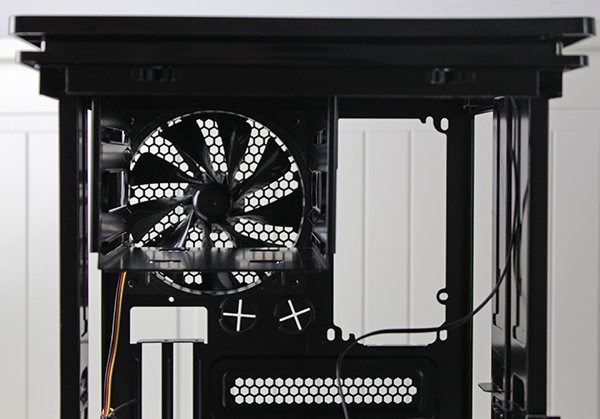
The spec states that the Nebula can accommodate two 3.5-inch drives or a single 3.5-inch drive and two 2.5-inch drives. We found that it is possible to fit three 2.5-inch drives alongside the 3.5-inch drive.
Two 2.5-inch drives can be mounted on a on a metal tray. In case you need more, you can install a third 2.5-inch drive at the bottom of the HDD cage.
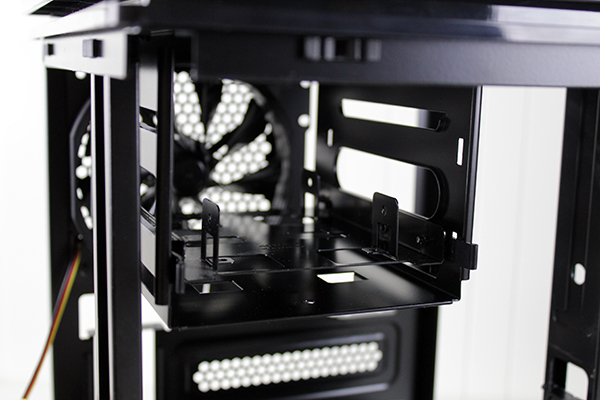
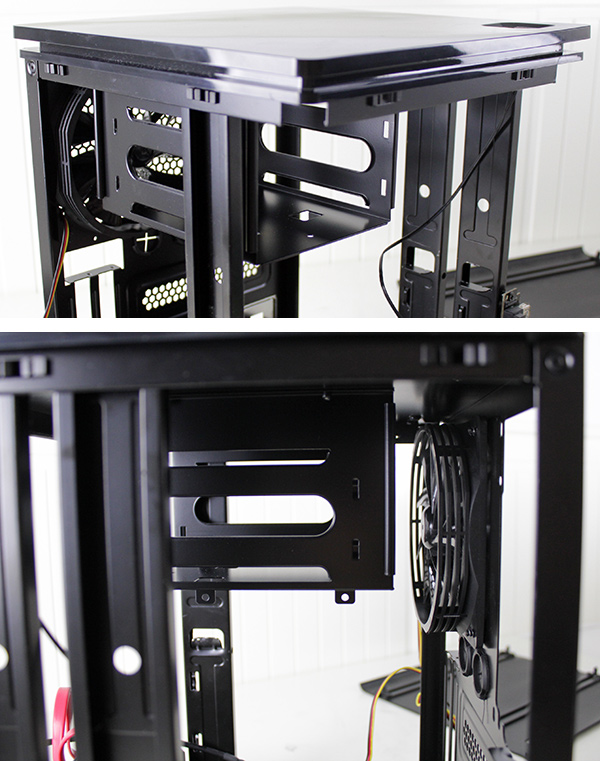
Due to the vertical placement of the PSU, the CPU cooler height is limited to 80mm. On the other hand, the vertically mounted PSU provides more room for hard drives.
The Nebula chassis is good choice for a wide range of users. It looks good enough to be used for a powerful HTPC setup in your living room, it won't look out of place in the office and even gamers could use it to put together a compact mini-ITX rig. There are, however, a number of limitations. The CPU cooler cannot exceed 80mm and the graphics card can't be too long, either.
The motherboard slides into place easily and it is attached using four standoff mounts. Mounting the CPU cooler prior to installation is a good idea, as there is not too much room at the top.
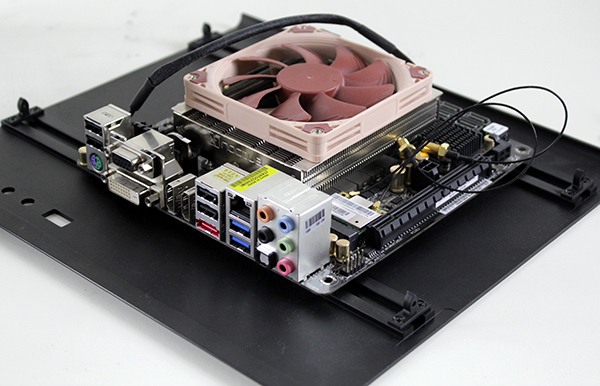
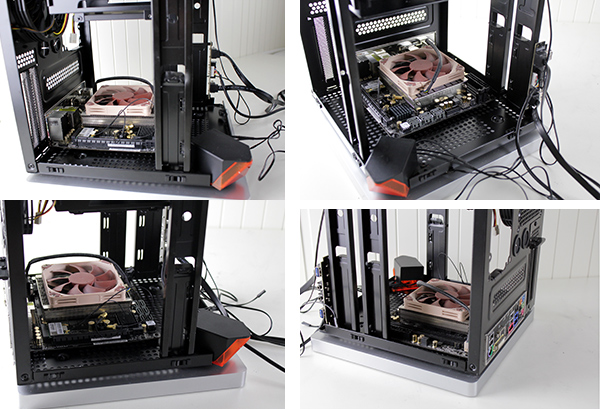
The HDD cage comes preconfigured with a metal tray that can house two 2.5-inch drives.
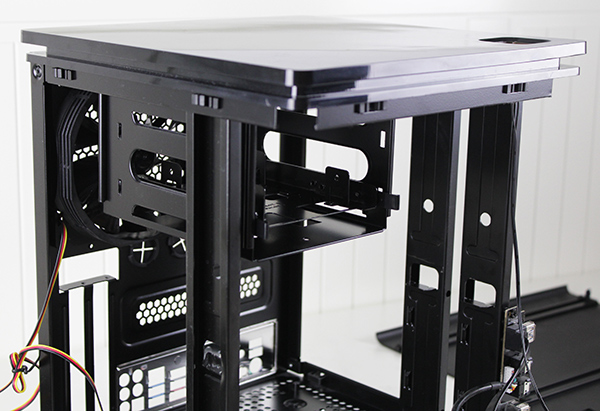
The trays work as advertised. You simply need to follow instructions, mount the necessary plastic components on the drive and simply slide it in.
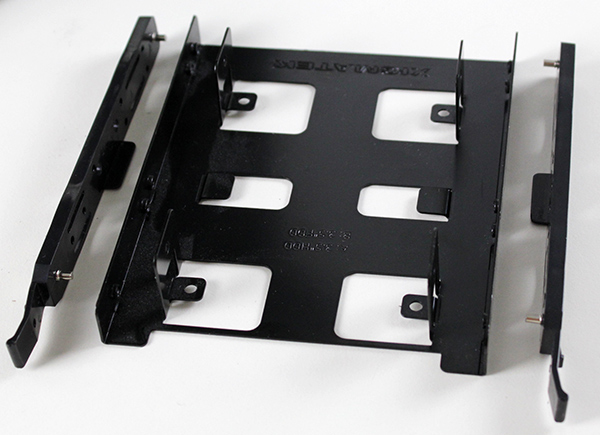
The first 2.5-inch drive is screwed from the bottom, while the second one is screwed in place from the side. The screws are shipped with the chassis.
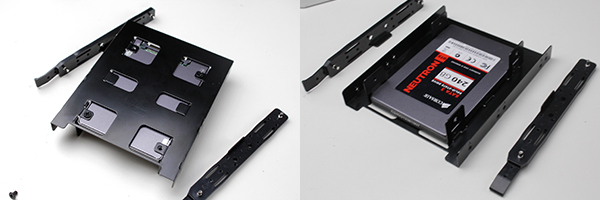
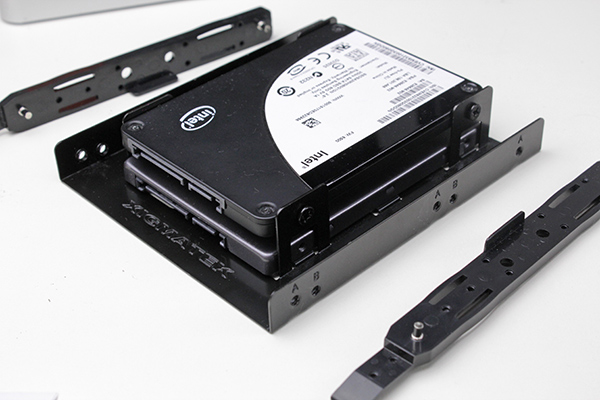
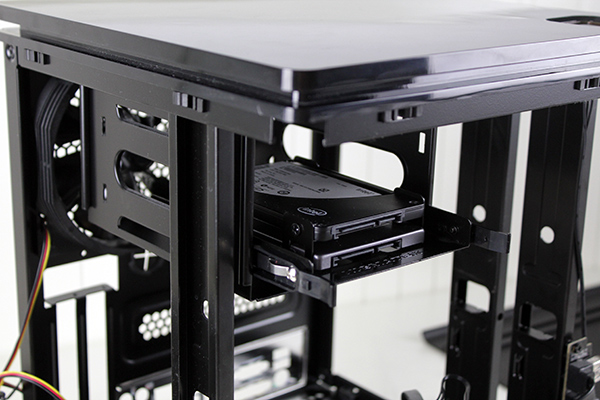
In case you plan on using two 3.5-inch drives, the spec will tell you that this is only possible if no 2.5-inch drives are used. However, we found another 2.5-inch bay that is not listed in the official spec. It is located at the bottom of the HDD cage. With this forgotten 2.5-inch mount, it is possible to install a 2.5-inch SSD and two 3.5-inch drives, which is good news for RAID lovers.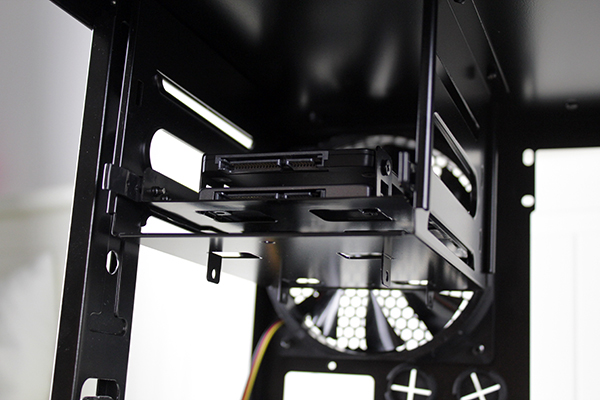
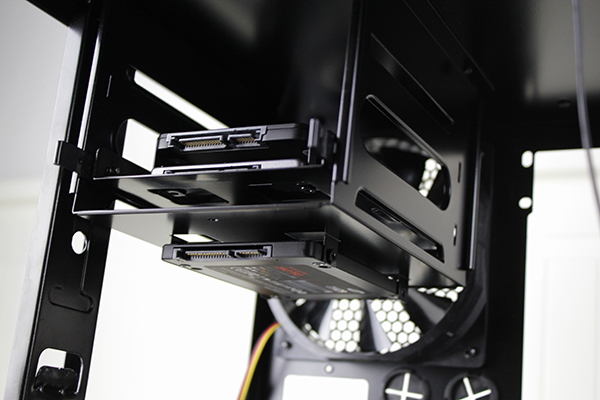
In total, the Nebula can accommodate four drives.
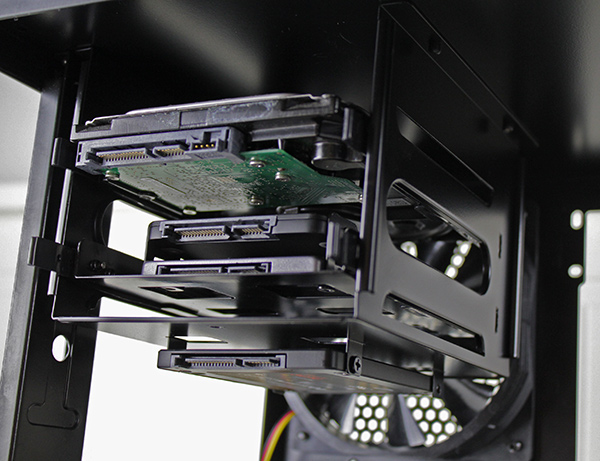
Since the Nebula uses standard ATX PSUs, it is possible to install a very powerful unit. We suggest a modular one. It is better for cable management and since this is a compact chassis, there is not that much space to waste.
We had no trouble using an Antec PSU measuring 86 mm (H) x 150 mm (W) x 180 mm (D). The PSU should be mounted carefully, since there is not a lot of room for manoeuvre and it is easy to scratch the PSU or the chassis in the process.
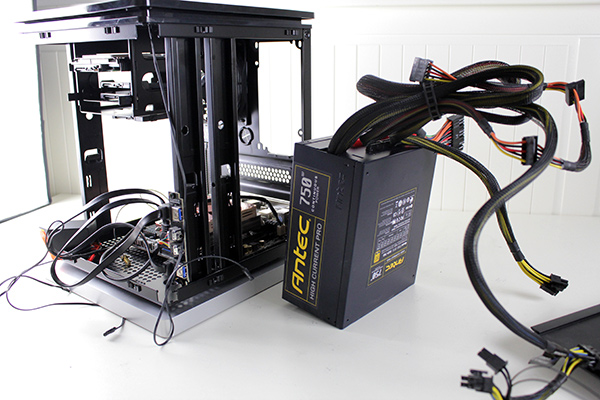
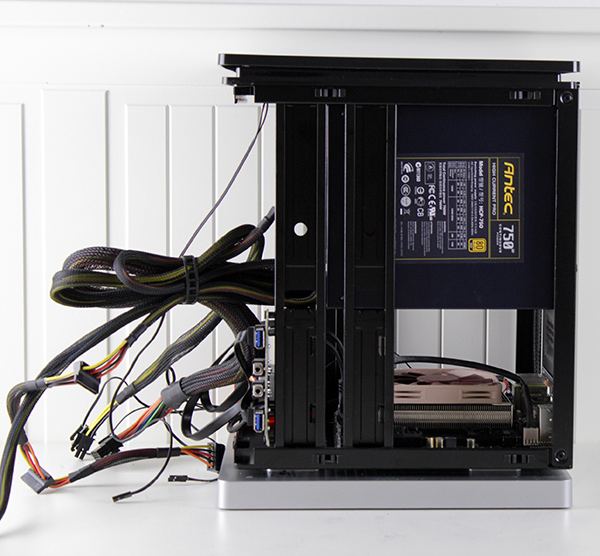
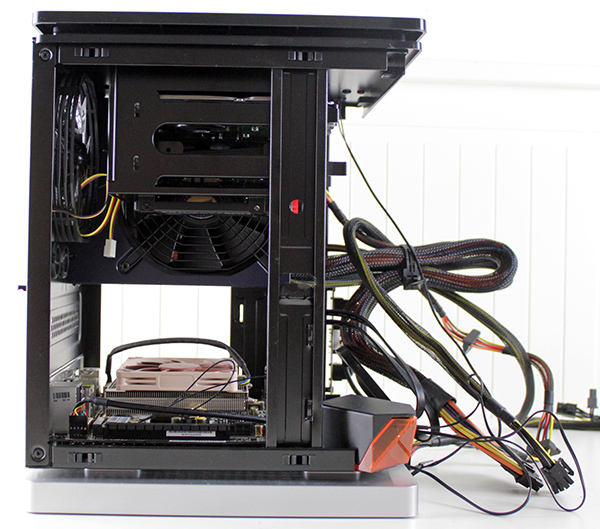
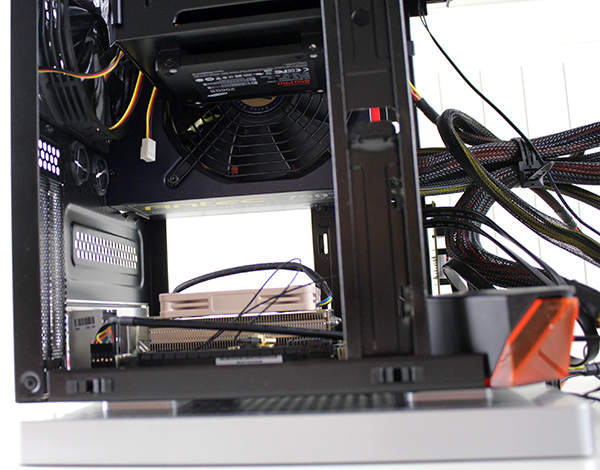
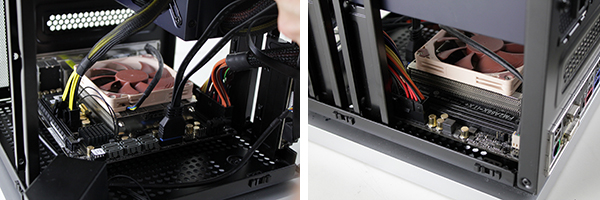
Like most compact cases, the Nebula features an extruded mount for graphics cards, which means the screw are located on the outer side of the chassis. The mount save a bit of room inside, so this approach is fairly common in small enclosures. The metal mount is removed prior to installation and screwed back in place once you get the card in there. Of course, you can choose not to use it at all.
We believe Xigmatek should have gone with a tool-less approach here, with proper screws that can be undone manually like on the Xigmatek Aquila chassis.
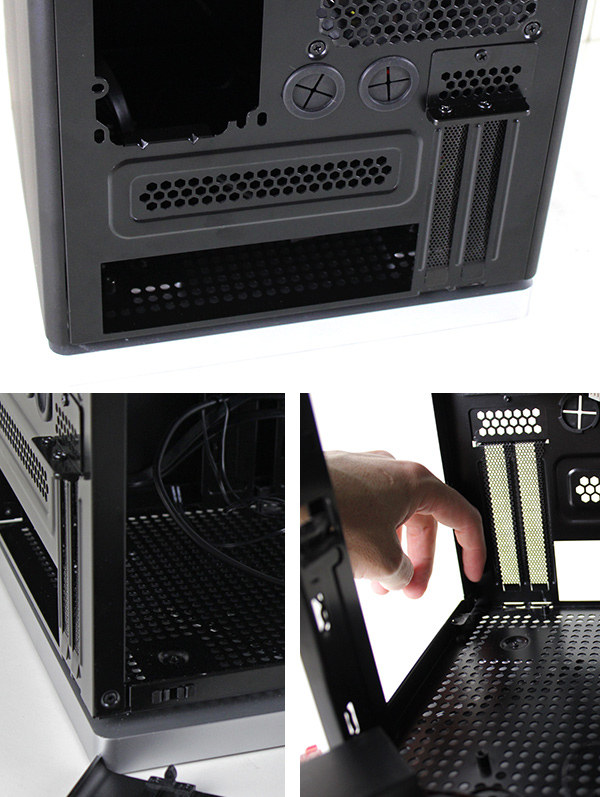
A dual slot graphics card will still have enough air, as there is about a centimetre of room between the card and the side panel.
The biggest problem is the activity LED housing, which wastes space and limits the length of dual-slot cards to 175mm. For example, the EVGA GTX 750 TI FTW is 228mm long and it could not be mounted until we disassembled the LED housing.
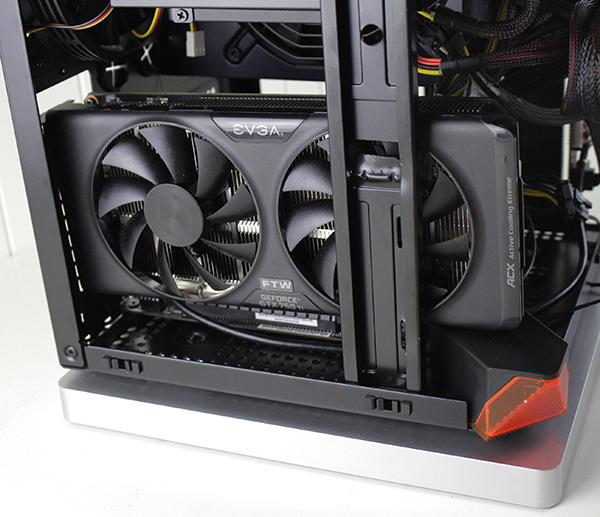
The housing itself is oversized, but luckily it is possible to remove the lid by undoing two screws. This will have no impact on the operation of the LEDs.
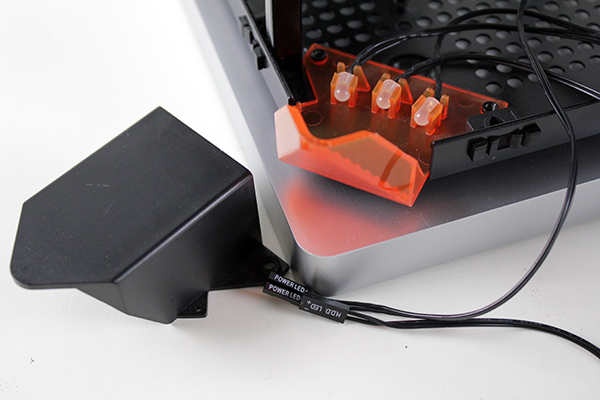
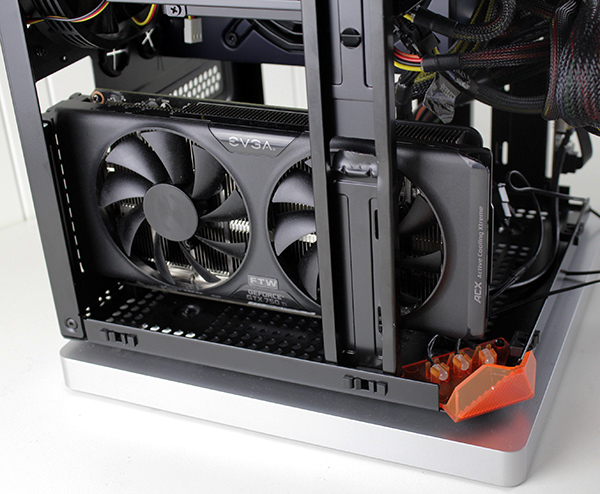
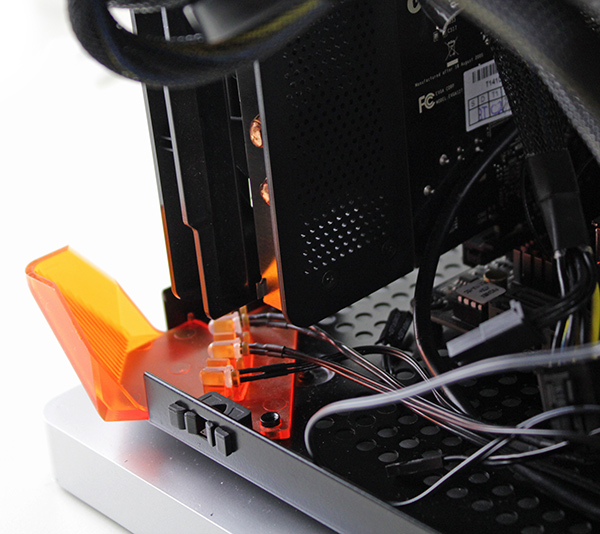
The cosmetic surgery was a success and it allowed us to install the EVGA card with room to spare.
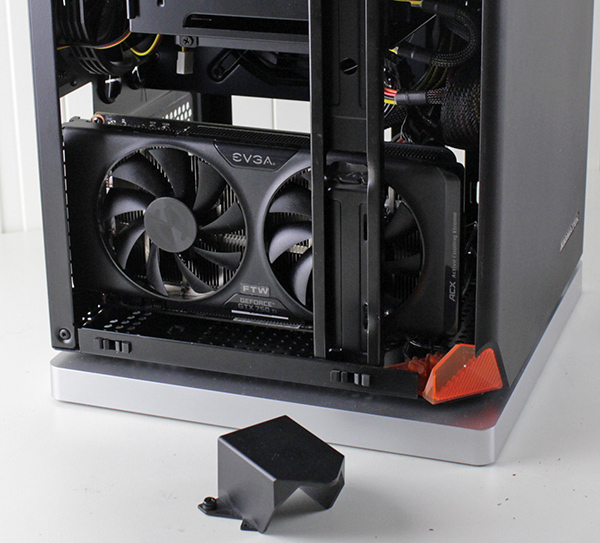
Although there is enough room on either side of the card, we still think it is a good idea to choose a blower-style card.
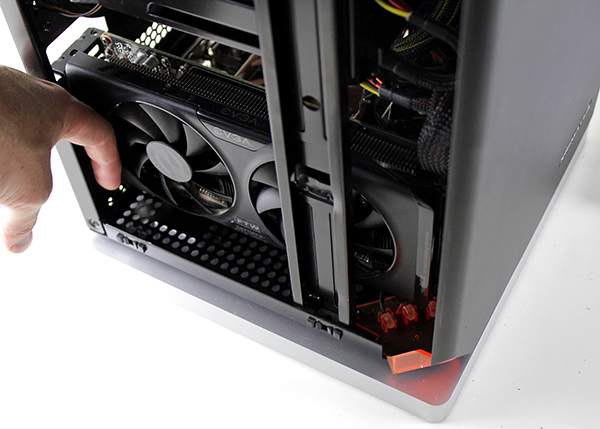
Then we started to push our luck with the HFA2 GTX 780Ti Hall Of Fame. This triple-slot card proved too long for the Nebula, but at least it was not too wide.
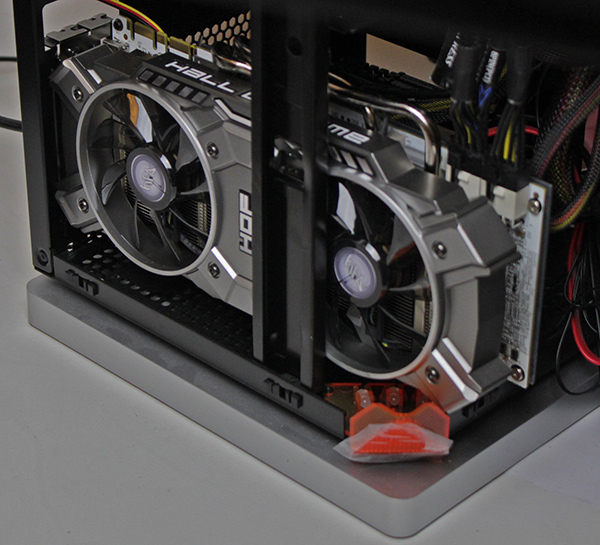
The memory modules can be installed through the right panel. Of course, there is not a whole lot of room to play around with, so bear that in mind.
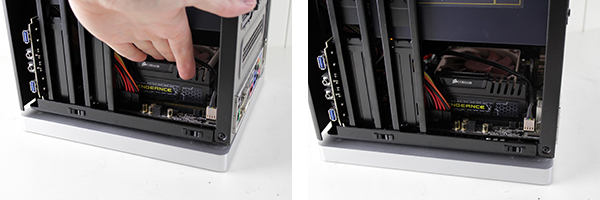
Sadly, neat cable management is not one of Nebula's selling points. It takes a lot of time and effort to arrange all the cables and a modular PSU comes in very handy indeed.
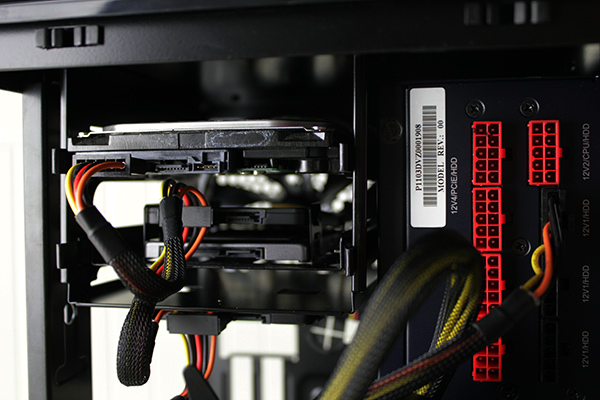
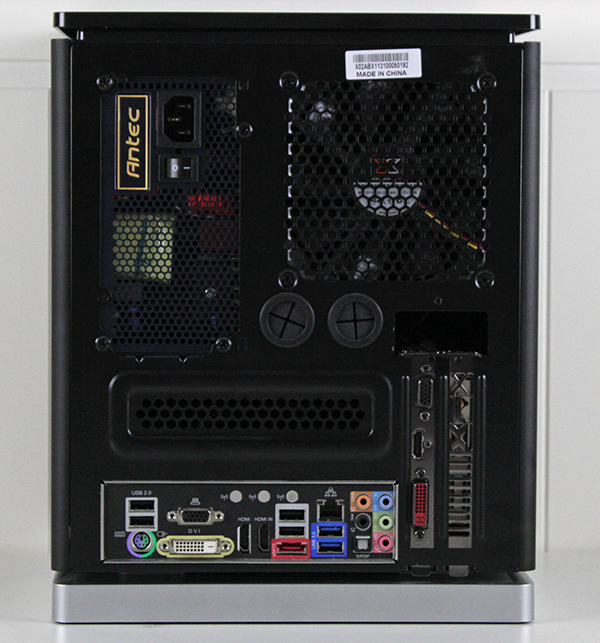
However, at the end of the day the Xigmatek Nebula is still a very attractive chassis with a couple of minor shortcomings that won't affect users who don't tinker with their rigs on a frequent basis.
The build quality is great and the included exhaust fan is very quiet. As far as cooling performance goes, the chassis can heat up due to its limited volume, but for most configurations this should not be an issue. It is easy to remove a side panel during extended gaming sessions and let's not forget that it is possible to install a compact water cooling system, too.
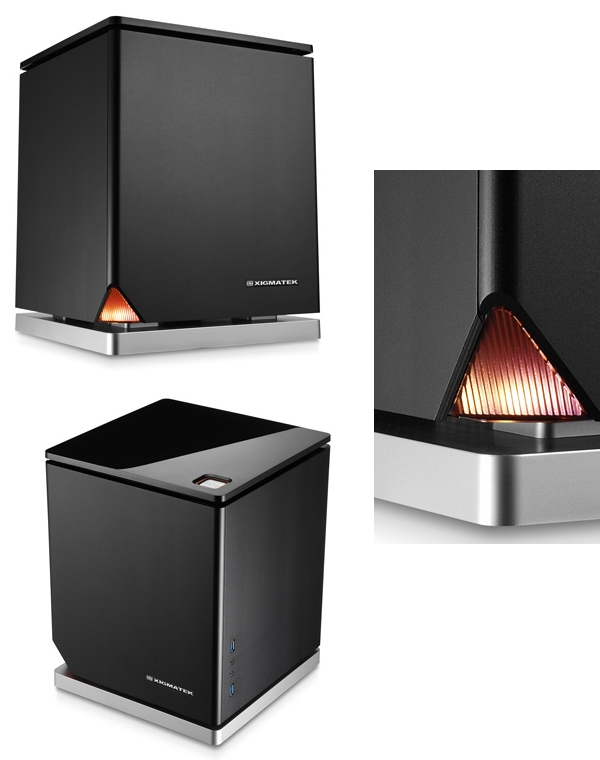
Overall the Xigmatek Nebula left a positive impression. Whether you like its looks or not is another question, we found it rather elegant.
The sharp edges at the top and bottom are complemented by smooth, chamfered edges on the sides. The choice of matte black, piano black and silver finishes guarantees it will look good next to a wide range of hardware and peripherals - unless you happen to have a white monitor and desktop. There's some mystique to it, too.
There is not much to complain about. The glossy top panel looks nice, but it is a magnet for scratches and smudges. Cable management could be an issue depending on the amount of components you choose to use in your build. These are minor issues.
The Nebula sells for about €70 in Europe, which isn't cheap, but then again neither are the 3mm thick aluminum side panels. Although this is a mini-ITX chassis, it is not small and it can accommodate a lot of components, including mid-range graphics cards and a bunch of hard drives. Essentially it can be used for a mid-range gaming rig.
The official spec does not tell the whole story. We found an additional 2.5-inch drive bay, which means the chassis can take three of them rather than two. Dual-slot cards up to 175mm can be used, but cards as long as 230mm (11in) can be installed when part of the activity LED housing is removed. Single slot cards of up to 200m can be installed out of the box.
In conclusion, Xigmatek did a good job and we have no problem recommending the Nebula as a stylish small form factor alternative to mATX cases. We’d like to thank caseking.de who kindly provided our testing sample.

